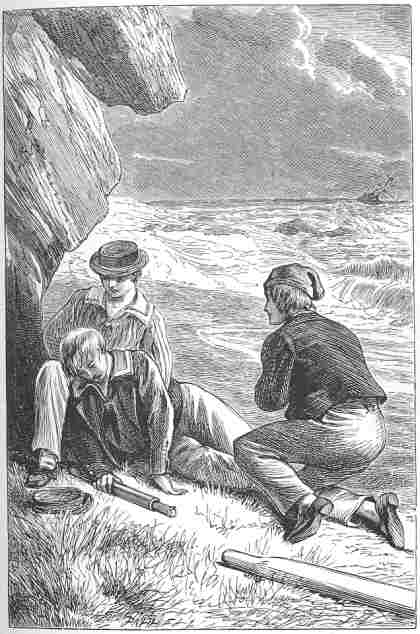Adventure and Survival in The Coral Island

You'll set off on thrilling adventures of survival in "The Coral Island," where young heroes tackle challenges head-on. Faced with the shock of being stranded, you'll learn to scout for fresh water, edible plants, and wildlife. Building shelters from branches and leaves becomes essential as you navigate tropical storms and wildlife encounters. Forming bonds with natives through gestures and respect opens doors to cultural exchanges.
Stranded on the Island
Imagine the moment you realize the ship is gone, and you're stranded on a remote coral island in the vast ocean. Panic might be your initial reaction, but don't let it overwhelm you. It's time to focus on island investigation and develop vital survival skills.
Initially, take a deep breath and assess your surroundings. Notice the dense vegetation, the potential sources of fresh water, and any signs of wildlife. Start examining the island carefully. Look for natural resources like fruits, nuts, and fish, which can provide immediate sustenance. Pay attention to paths and landmarks to avoid getting lost.
As you investigate, you'll need to prioritize finding a reliable source of fresh water. Look for streams or collect rainwater if possible. Hydration is imperative, so make this your top priority.
Next, consider your survival skills. Knowing how to start a fire is invaluable. Gather dry wood and kindling, then use friction or a magnifying glass to ignite it. Fire not only cooks food but also provides warmth and protection.
Building Shelter
With your immediate needs for food and water addressed, it's vital to focus on building shelter to protect yourself from the elements and any potential threats. Start by scouting the area for suitable shelter materials. Look for sturdy branches, large leaves, and vines. Palm fronds and bamboo can also be highly effective due to their durability and availability.
Once you've gathered your materials, it's time to employ some simple construction techniques. Initially, find a stable tree or a cluster of trees to serve as the backbone of your shelter. Next, arrange the branches to form a basic triangular frame, making certain it's sturdy enough to withstand wind and rain. Secure the frame using vines or flexible branches, weaving them tightly to create a strong foundation.
Cover the frame with large leaves or palm fronds, overlapping them to make sure water doesn't seep through. For added insulation, consider layering leaves or any other soft organic material inside the shelter. This will not only keep you dry but also provide some comfort. Remember, a well-built shelter is vital for your survival and will serve as your safe haven on the island.
Finding Food and Water
Securing a reliable source of food and water is vital for your survival on the island. Initially, focus on finding freshwater sources. Look for streams or rivers flowing from higher ground. Rainwater collection can also be an effective method. Use broad leaves or create makeshift containers from coconuts to gather and store the water.
Foraging techniques will be your next important skill. Start by identifying edible plants and fruits. Coconut trees are goldmines; their fruits provide both nutrition and hydration. Bananas, breadfruit, and berries can also be lifesavers. Familiarize yourself with local vegetation to avoid poisonous plants.
Fishing is another fundamental technique. Use sharpened sticks as spears or craft simple fishing lines from available materials. Tide pools often house crabs and small fish, which are easier to catch. Always cook any seafood you catch to avoid foodborne illnesses.
Facing Natural Dangers
Maneuvering the natural dangers of the island is vital for your survival. The Coral Island is filled with challenges that test your wit and resilience. Storm survival is imperative, as sudden tropical storms can devastate your camp and leave you vulnerable. You need to build a sturdy shelter from palm leaves and branches, ensuring it's anchored well to withstand strong winds and rain.
Wildlife encounters are another significant aspect of your survival. The island is home to both friendly and dangerous creatures. Always be cautious and aware of your surroundings. Learn to identify which animals are safe and which ones pose a threat. For instance, a seemingly harmless snake could be venomous, so avoid touching unfamiliar wildlife.
Here are three key tips to improve your survival skills on the island:
- Storm Preparation: Construct a strong, weather-resistant shelter. Regularly check and reinforce it to withstand storms.
- Wildlife Awareness: Educate yourself on the island's fauna. Know which animals are safe and how to protect yourself from dangerous ones.
- Resource Management: Efficiently use natural resources for both shelter and protection, ensuring you're prepared for any natural dangers.

Encounters with Natives
Maneuvering encounters with the island's natives is a vital part of your survival strategy. When you initially meet them, there's a lot to learn quickly. The cultural exchange can be both fascinating and significant. Understanding their customs and ways of living can help you find food, shelter, and even allies. But it's not all smooth sailing. You'll face considerable communication barriers, especially if you don't speak their language or understand their signals.
You might find yourself miming actions or using drawings in the sand to get your point across. It's imperative to remain patient and respectful. Misunderstandings can happen easily and could lead to unnecessary conflict. Showing genuine interest in their culture and being open to learning from them can build trust.
Sometimes, the natives might not be immediately friendly, and you'll need to prove you're not a threat. Small gestures like sharing food or helping with tasks can go a long way in bridging that gap. Remember, successful interaction isn't just about survival; it's about building a rapport that can foster mutual respect and cooperation, making your island experience richer and safer.
Lessons in Friendship and Courage
In the face of adversity, you'll find that the bonds you form and the courage you muster are fundamental to your survival on The Coral Island. The story showcases how teamwork dynamics and bravery examples are significant in overcoming challenges. When Jack, Ralph, and Peterkin face intimidating obstacles, their friendship becomes their greatest asset. They rely on each other's strengths and support one another through thick and thin.
- Jack's Leadership: Jack often takes the lead, demonstrating bravery by spearheading dangerous tasks. His courage inspires others to follow suit, proving that strong leadership is essential in dire situations.
- Ralph's Diplomacy: Ralph's ability to mediate and maintain harmony within the group highlights the importance of communication and cooperation. His diplomatic skills guarantee that everyone's voice is heard, fostering a sense of unity.
- Peterkin's Humor: Peterkin's light-hearted nature keeps the group's spirits high. His cheerfulness in the face of danger shows that courage also includes maintaining morale, which is critical for long-term survival.
Conclusion
It is an amazing tale of adventure and survival that showcases the resilience and resourcefulness of its young heroes, Jack, Ralph, and Peterkin. From building shelters and securing food to braving natural dangers and forming alliances with natives, every challenge they face becomes an opportunity for growth and teamwork. Their camaraderie and courage not only help them navigate the perils of island life but also reinforce the importance of unity and friendship in overcoming adversity.




